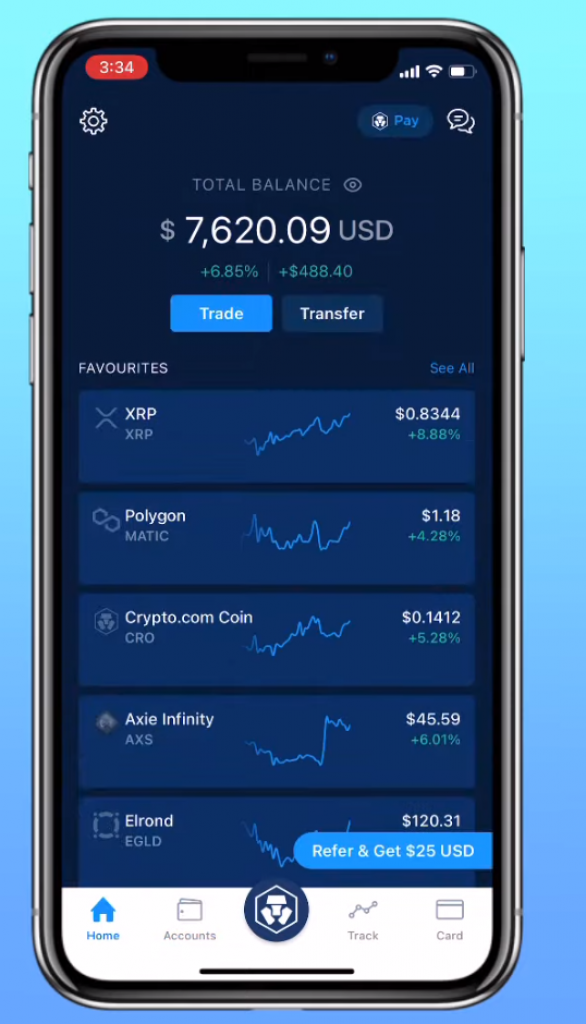Cryptocurrency has taken the world by storm, and its popularity continues to grow. With more people adopting digital currencies, the need for cryptocurrency exchanges has become more pressing. These exchanges have become the go-to for buying, selling, and exchanging cryptocurrencies, with billions of dollars’ worth of transactions taking place daily. But how do cryptocurrency exchanges make money?
Cryptocurrency exchanges operate on a simple principle: they act as intermediaries between buyers and sellers of digital currencies. They earn their revenue through transaction fees, which are charged to users for each trade they make. These fees vary from one exchange to another, with some charging a flat percentage of the transaction while others charge a fixed amount. Additionally, some exchanges offer premium services such as margin trading or faster transaction processing, which come at an additional cost to the user. With the tremendous growth potential of the cryptocurrency market, exchanges have become one of the most lucrative business ventures, making millions of dollars in revenue annually.
Cryptocurrency exchanges make money by charging transaction fees for users who buy and sell digital assets. Usually, exchanges charge a percentage of each transaction, which is typically between 0.1% and 0.25%. Exchanges can also generate revenue from margin trading and derivatives, as well as by offering innovative services like staking and borrowing. Additionally, some exchanges make money through listing fees, which is when a new cryptocurrency pays the exchange to have their token listed on the platform.

How Do Cryptocurrency Exchanges Make Money?
Cryptocurrency exchanges are online platforms that enable users to buy, sell, or trade digital currencies like Bitcoin, Ethereum, and more. While these exchanges provide an important service to the crypto space, many people are left wondering how exactly they make money. In this article, we’ll explain how cryptocurrency exchanges make money and explore some of the different business models and revenue streams.
Trading Fees
One of the most common ways for cryptocurrency exchanges to make money is through trading fees. These fees are generally charged when users place buy or sell orders on the exchange. Depending on the exchange, these fees may be a flat fee or a percentage of the total transaction value. By charging trading fees, exchanges are able to generate a steady stream of income while providing an important service to their users.
Another way that exchanges can make money from trading fees is through maker-taker fees. Maker-taker fees involve a tiered fee structure, with makers (those who place limit orders on the order book) charged a lower fee and takers (those who place orders that are executed immediately) charged a higher fee. This type of fee structure encourages makers to place limit orders, helping to maintain order book liquidity.
Listing Fees
Another way that cryptocurrency exchanges make money is through listing fees. These fees are charged when a new cryptocurrency is listed on the exchange. Listing fees can range anywhere from a few thousand dollars to millions of dollars, depending on the exchange. By charging listing fees, exchanges are able to generate additional revenue while maintaining their platform.
In addition to listing fees, some exchanges also charge delisting fees when a cryptocurrency is removed from the exchange. These fees are typically much lower than listing fees and are charged to cover the costs associated with removing the cryptocurrency from the exchange.
Margin Trading
Many cryptocurrency exchanges also offer margin trading, which allows users to trade with borrowed funds. Margin trading is a high-risk, high-reward activity, and exchanges charge fees for providing this service. Generally, margin trading fees are a combination of interest fees, broker fees, and exchange fees. By providing margin trading services, exchanges are able to generate additional revenue from their users.
Transaction Fees
Some cryptocurrency exchanges also charge transaction fees for withdrawals and deposits. These fees are generally charged when a user makes a deposit or withdrawal from their account. Transaction fees can range from a few cents to a few dollars, depending on the exchange. By charging transaction fees, exchanges are able to generate additional revenue from their users.
Cryptocurrency Mining
Many cryptocurrency exchanges also engage in cryptocurrency mining. Cryptocurrency mining involves verifying transactions on a blockchain network and is rewarded with newly minted digital coins. By mining cryptocurrency, exchanges are able to generate additional revenue while contributing to the network.
Trading Bots
Trading bots are computer algorithms that trade on behalf of users. Many cryptocurrency exchanges offer trading bots as a way for users to automate their trading strategies. These bots are usually offered for a fee, which the exchange collects as revenue. By providing trading bots, exchanges are able to generate additional revenue while providing an important service to their users.
Over-the-Counter Trading
Over-the-counter (OTC) trading is a type of trading that occurs outside of the traditional exchange system. Many cryptocurrency exchanges offer OTC trading as a way for users to buy and sell large amounts of cryptocurrency without having to use the exchange’s order book. OTC trading is usually offered for a fee, which the exchange collects as revenue. By offering OTC trading, exchanges are able to generate additional revenue while providing an important service to their users.
Advertising
Another way that cryptocurrency exchanges make money is through advertising. Many exchanges display advertisements on their websites, which generate revenue for the exchange. By displaying advertisements, exchanges are able to generate additional revenue while providing an important service to their users.
Affiliate Programs
Many cryptocurrency exchanges also offer affiliate programs. These programs allow users to earn commissions when they refer new users to the exchange. Affiliate programs are a great way for exchanges to generate additional revenue while providing an important service to their users.
Frequently Asked Questions
Cryptocurrency exchanges are platforms where people can buy, sell, and trade digital currency. They are a popular way to participate in the cryptocurrency market and make money.
How do cryptocurrency exchanges make money?
Cryptocurrency exchanges make money by charging fees for the services that they offer. These fees are usually charged for trading, deposits, and withdrawals. Most exchanges will also charge a fee for any transfers to and from other exchanges. The fees vary from exchange to exchange, so it is important to shop around to find the best deal.
Another way that cryptocurrency exchanges make money is by providing additional services. These services can include margin trading, lending, staking, and other services. The exchange will usually charge a fee for these services, as well as for any transactions related to them. This can be a great way for traders to make money, as the fees are often much lower than traditional financial institutions.
How Crypto Exchanges like Coinbase, Binance Makes Money
In conclusion, the world of cryptocurrency exchanges is a fascinating and complex one. While it may seem as though these platforms are simply facilitating the buying and selling of digital assets, the truth is that there is much more going on behind the scenes. The ways in which exchanges make money are varied and often rely on sophisticated financial strategies and technologies. From trading fees and margin lending to staking rewards and ICO launches, there are many avenues that exchanges can pursue to generate revenue and stay competitive.
As the cryptocurrency market continues to evolve and mature, it is likely that we will see even more innovation and experimentation from exchanges. While there are certainly risks and uncertainties involved in this emerging field, there is also tremendous potential for growth and profitability. Whether you are an investor, a trader, or simply someone interested in the world of digital finance, keeping up with developments in the cryptocurrency exchange space will be an important part of staying informed and engaged in the world of finance.



